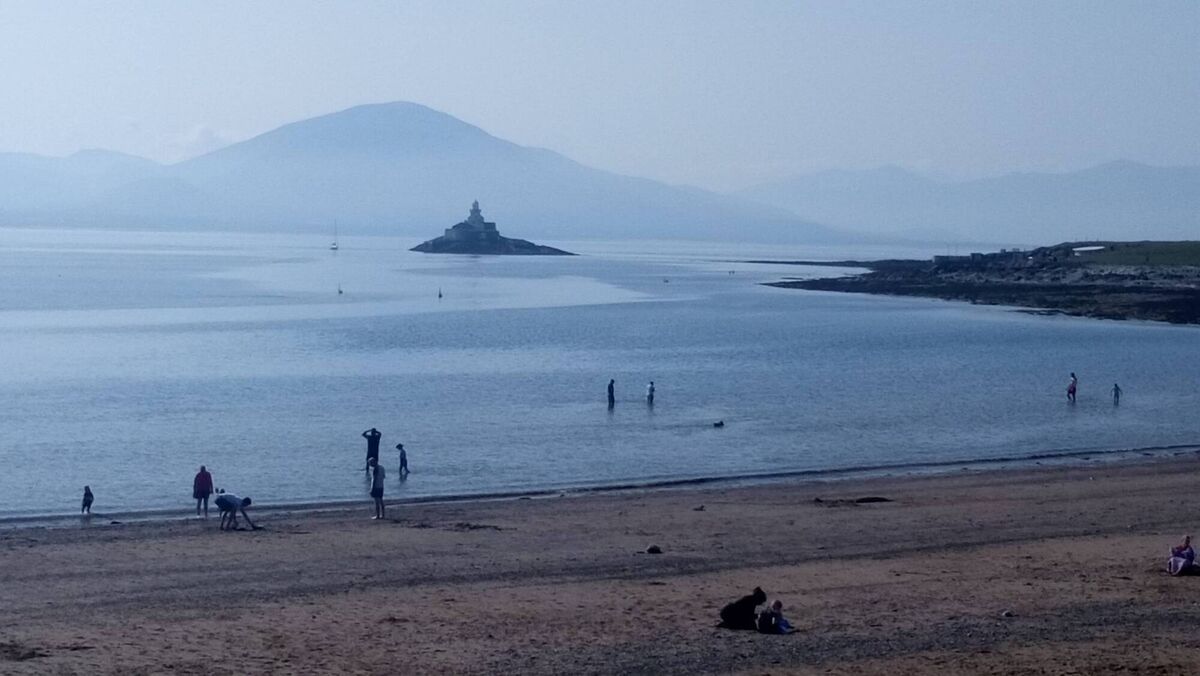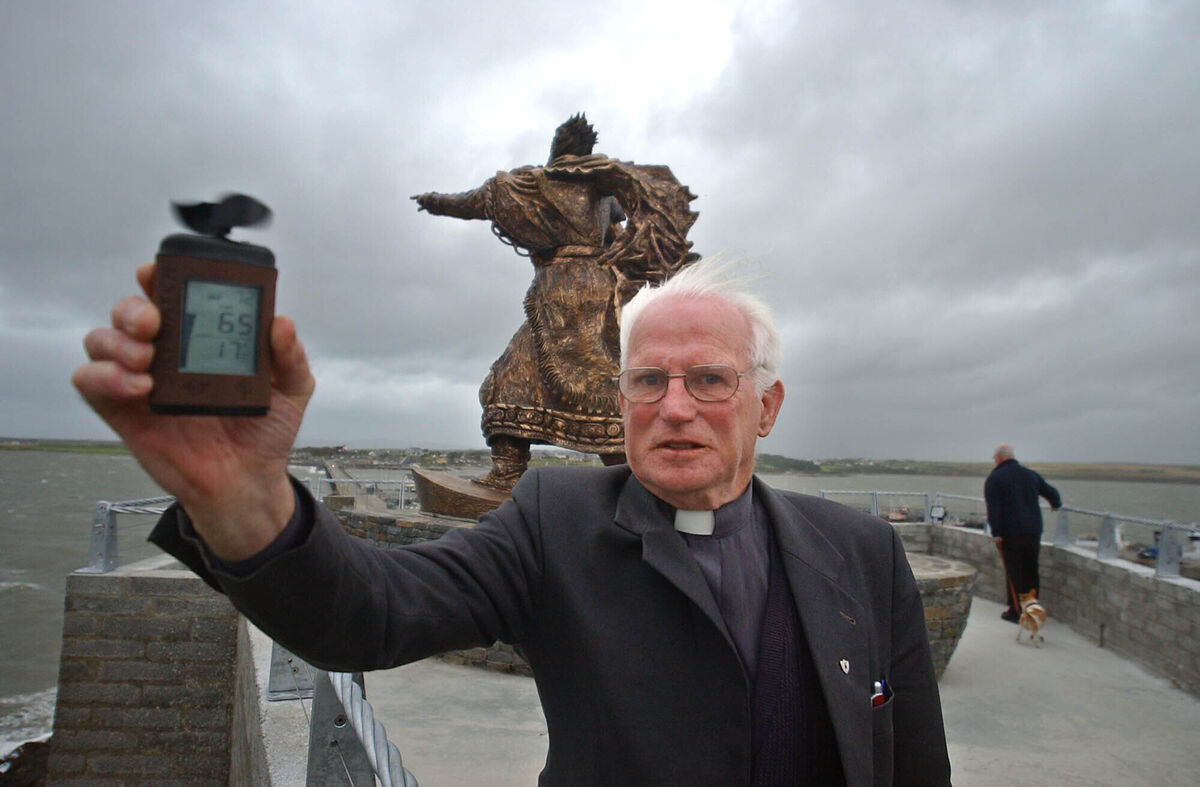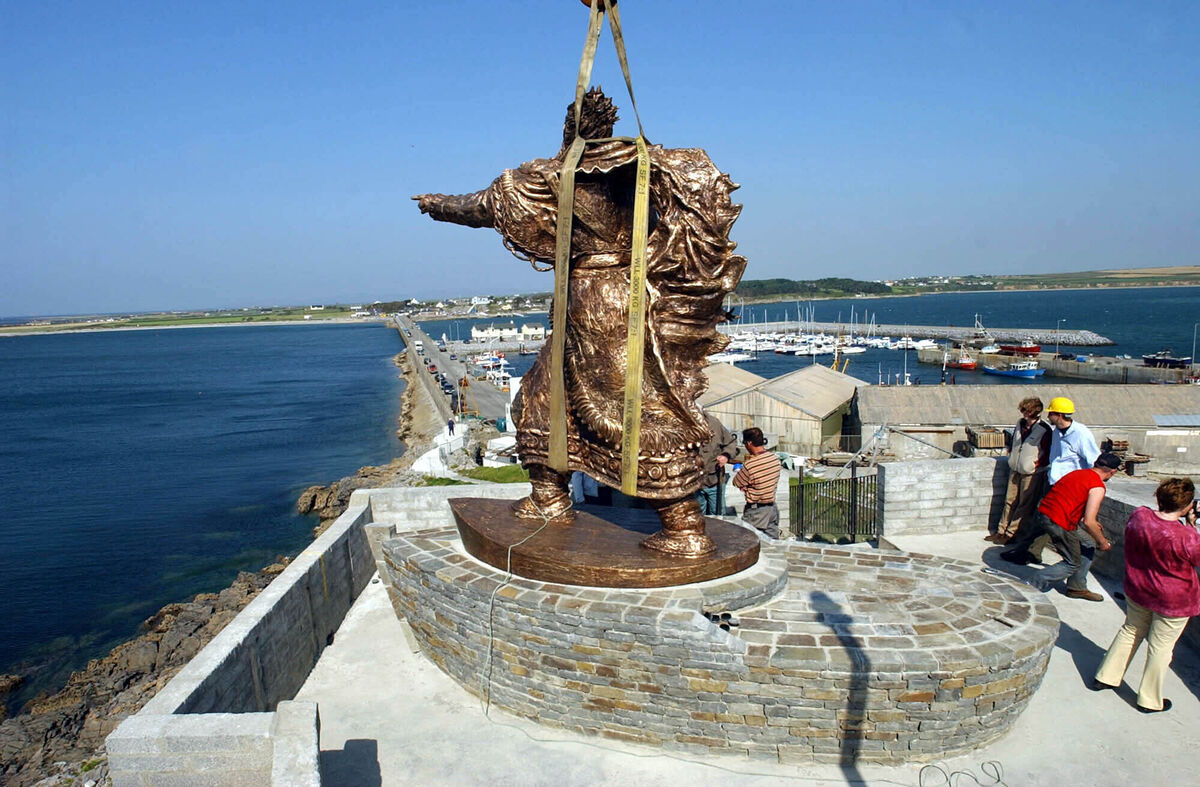Islands of Ireland: Superb symbol of courage and exploration on Kerry's Great Samphire Island

St Brendan the Navigator sculpture and Great Samphire Island, Fenit, County Kerry
The ruin on Great Samphire Island, County Kerry, has long since been engulfed and surrounded by the structures you would associate with a modern commercial port: gantries, sheds, cranes, piers. However, a symbol of antiquity outshines any kind of modernity evident here in the shape of a sculpture of Brendan the Navigator. The bronze work evokes a magnificent era of scholarship and learning at the dawn of Christianity on this island. St Brendan, with the gospels under his arm, strains against a gale force wind and points out to sea. He appears to urge his believers to strive for knowledge in the service of god.
The ‘great’ of the island’s name refers to its size versus its neighbour, Little Samphire Island, and has nothing to do with greatness. Also witness Greater and Lesser Antilles, or Great Britain versus the lesser parts of its kingdom, depending on which history you read.
The island is no longer a true island as it is now joined to the mainland by a viaduct and bridge which were first constructed in the 1880s and modified over the years. The modern ‘island’ bears no resemblance to its former self but it is still interesting to speculate whether St Brendan rowed over in his currach as a young man and set foot there. Entirely possible.

Ironically, Little Samphire Island is the more famous of the two islands due to its fine lighthouse which was opened in 1854 before being automated exactly 100 years later. There are also Samphire Islands in England and the name derives from the plant of the same name which proliferates in parts of County Kerry.
St Brendan was reputedly born in nearby Ardfert in the 5th century and founded several monasteries including on the Aran Islands. He travelled around the Celtic lands of Brittany, Wales and Scotland before embarking on one of the greatest ever sea voyages across the Atlantic. Fittingly, he also gave his name to Mount Brandon.
He set off to venture into the unknown world to the west beyond towering seas and hostile lands and possibly became the first ‘westerner’ to reach north America. Prior to this, he had engaged on another epic sea journey with over a dozen fellow monks in search of the Garden of Eden. On this epic trip, he encountered what he described as St Brendan’s Isle in a part of the ocean where no land existed. Like Hy Brasil and Buss, this was an imaginary island or even the back of a sea monster recorded as Jasconius.
St Brendan’s journey across the north Atlantic was recreated by the explorer Tim Severin in 1976/77 when he lashed some ox hides over a wooden frame, tied them down with leather thongs, and crossed the ocean with a crew of three. Severin proved beyond doubt that the Irish monk could have crossed the Atlantic and did it 900 years before Columbus and several hundred years before the Vikings.

The late Father Gearóid Ó Donnchadha was the inspiration behind the sculpture of St Brendan on Great Samphire Island and as a heated debate about its location and provenance broke out in 2000 he told the Kerryman newspaper: “We can be certain of little else beyond the fact that he stood out from the many other monks and travellers of his time so that he became the eponymous hero of Navigatio Brendani, one of the more popular of medieval sagas.”

Versions of his voyage were written not just in the Celtic languages of Irish, Welsh and Breton, but also appeared in German, Flemish, Italian, Norse and Latin.
American sculptor and artist, Tighe O’Donoghue/Ross, was commissioned to render into a bronze likeness the spirit of St Brendan and this he achieved admirably. The sculptor’s best-known work is probably the rearing horse, An Capall Mór, on the Cork-Killarney road which dares the viewer to conjure up images of wild history.
St Brendan’s achievements are honoured by the sculpture on Great Samphire Island which stands in Fenit Harbour as a symbol of exploration and courage in all avenues of life.
How to get there: Stroll along the pier from Fenit, just outside Tralee.








